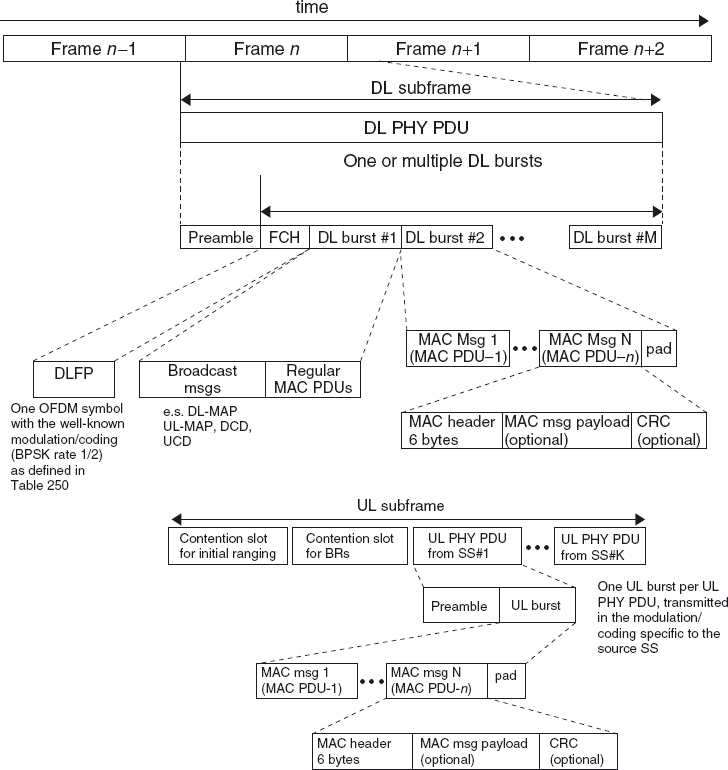Frame Structure in IEEE 802.16j
The frame structure in IEEE 802.16 relay mode bears many similarities to that of the PMP. A relay frame is divided into UL and DL parts, it can be TDD based, full FDD based, or half FDD based. However, the UL and DL segments in IEEE 802.16j are divided into multiple time zones depending on the type of communication required, that is, either access or relay. Access zones are dedicated to communications between a MS and either, a BS or a RS, while relay zones are dedicated to communications between a RS and either, a BS or another RS.


Figure 4.2 OFDMA and OFDM frame structure FDD operation mode. Reproduced by permission of © 2009 IEEE.
As mentioned earlier, relaying can be either transparent or non-transparent. Only two hops are allowed in the transparent mode (using a tRS), that is, BS-tRS-MS, with MS being within the coverage of the serving BS. On the other hand non-transparent relaying is used for coverage extension and can support two or more hops, that is, ntRSs can serve MSs as well as other RSs (tRS or ntRS). Accordingly, the frame structures of these two modes are expected to be different.
Frame Structure in Transparent Relaying
Figure 4.3 shows the OFDMA frame structure in the transparent relaying case. As in the PMP operation, a TTG separates ...
Get LTE, LTE-Advanced and WiMAX: Towards IMT-Advanced Networks now with the O’Reilly learning platform.
O’Reilly members experience books, live events, courses curated by job role, and more from O’Reilly and nearly 200 top publishers.

